So how do you build and manage your global workforce? Let’s look at the exact steps to find and retain top digital marketing talent.
Table of Contents
How to Hire for Remote Marketing Roles
Your digital marketing efforts begin with hiring exceptional remote marketers. But what does that process look like? Here’s how to approach it.
De-biased your hiring process.
All companies say that they’re hiring the best talent. But if they only hire local talent, they’re fishing in a tiny talent pool. Hiring remote workers means that you can truly hire the best marketer for the role! Don’t let unconscious biases sabotage this.
Biases impact the way hiring teams perceive workers, bolstering some candidates and downplaying others. Not only is it unfair to the candidates, but it also distracts your team from hiring the best people for the job. Bias impacts how a marketer is perceived, based on that candidate’s:
- Attractiveness.
- Education.
- Ethnicity.
- Gender.
- Name.
An effective hiring process actively removes bias wherever possible. This begins with a de-biased job description and requirements, and carries through the entire evaluation process. When done successfully, the result is a hiring process that focuses solely on which candidate will perform best in your digital marketing role.
A de-biased hiring process is usually a part of a larger HR initiative. If you’re only hiring freelancers for contracted roles, avoid low-quality job sites. Many companies rely too heavily on cheap bidding sites to find contractors that are willing to do the work for pennies on the dollar. The cost is low, but the quality often matches. Pay fair wages and you’ll attract quality contractors.
Identify barriers.
What are the barriers to your remote team’s success? Some common ones include:
- Self-management struggles, where marketers need more direct oversight to stay on schedule.
- Technology disconnect, where every team member uses different digital tools and systems.
- Misaligned time zones, causing communication difficulties.
- Social isolation, leading to disconnection.
Some of these barriers can be articulated in the job description, allowing candidates to self-select. For example, let’s say your company requires everyone to attend a recurring Monday morning meeting. If the company is based in Sydney, Australia, some candidates in North America might feel the position isn’t the right fit for them. A proactive approach to managing barriers is going to do everyone a favor.
To succeed at managing a remote team, you need to fully understand the challenges. I recommend taking the free remote leadership training in HubSpot Academy.
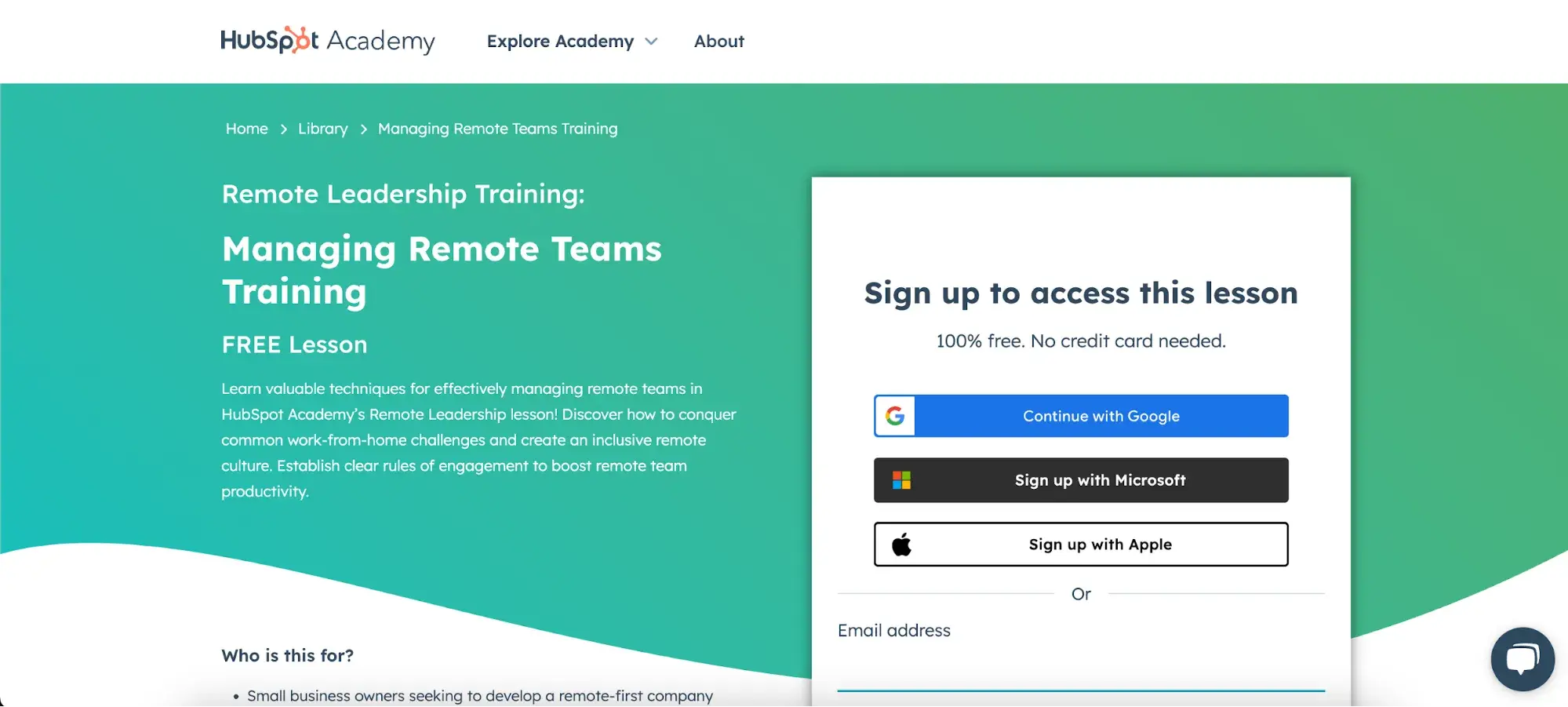
After the introduction, the first module covers the challenges of remote work. Then, solutions, tools, office culture, templates, and more. After watching each video lesson, I highly recommend browsing the resources. Underneath each video, look for the “resources” tab:
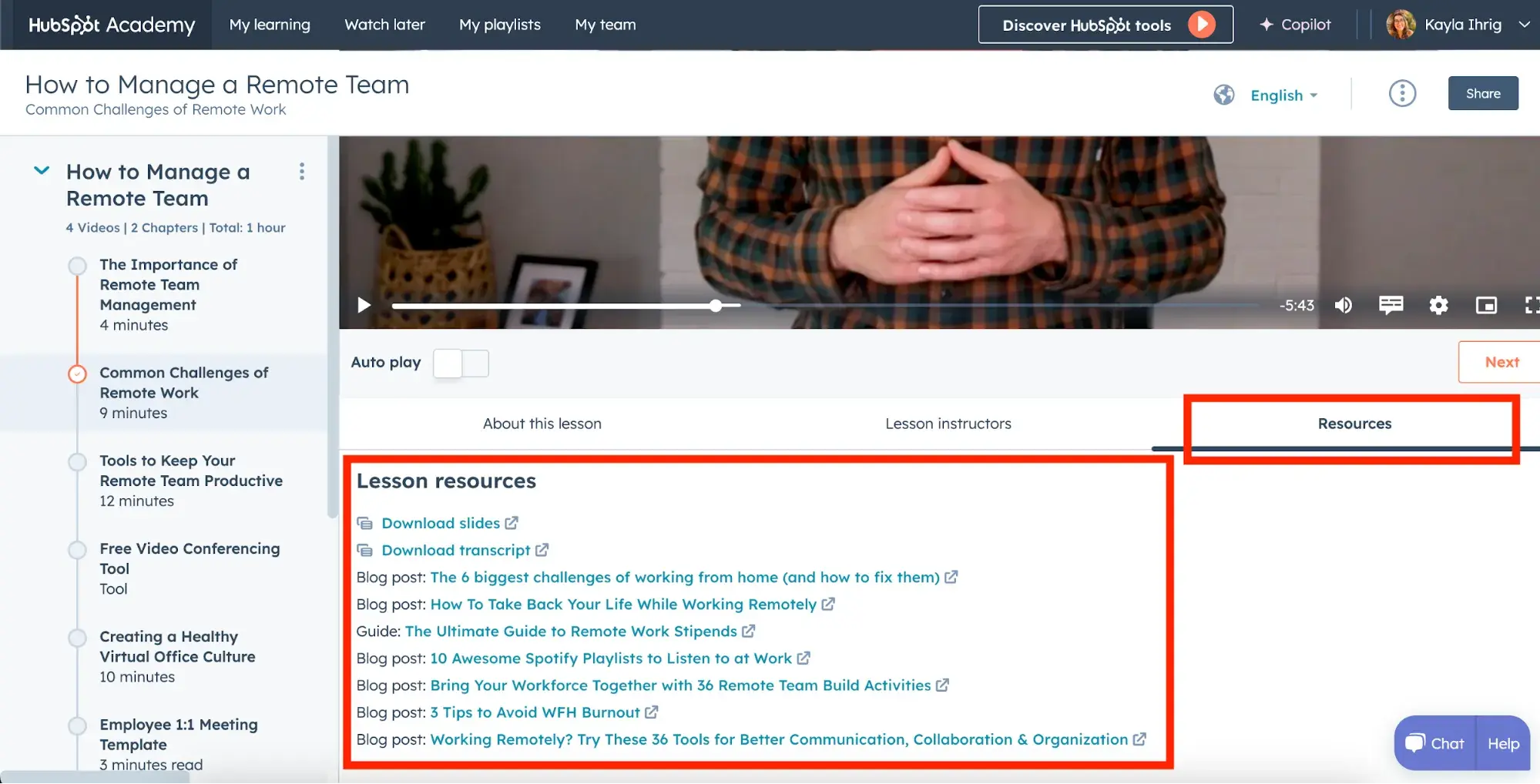
Upon signing up, you’ll get instant access to this course in HubSpot Academy. Lesson four (creating a healthy virtual office culture) is something near and dear to HubSpot. You’d be surprised how much of your company culture can translate (and even improve) to the remote environment.
Focus on soft skills.
Technical skills are important for every marketing role, but certain soft skills are crucial for long-term remote work success. The most successful remote digital marketers are:
- Great communicators.
- Proactive workers.
- Self-sufficient.
- Adaptable.
- Organized.
While soft skills can always be fostered on the job once working remotely, it’s productive to emphasize these in the hiring process for your remote marketing jobs.
When asked about soft career skills, Emily Justin-Szopinski, who is a thought leader in professional development and learning technologies, said that digital literacy, self-management, and self-learning were noteworthy career trends.
“You have to self-manage better when you’re in a remote or hybrid environment. You don’t have the vertical infrastructure feeding work to you,” Justin-Szopinski shared. “Workers need to be adaptable to new tech and be able to self-learn.”
I’ve been a part of remote teams where it was assumed that everyone understood and valued these qualities. It led to a lot of predictable tension and churn. These soft skills are fundamental for success in remote marketing jobs.
For example, one teammate couldn’t self-manage project deadlines and didn’t communicate when they were falling behind. Management assumed that they would self-correct, and delayed conversations about this because they assumed that the worker understood the team values.
Success begins with clear standards and communication of expectations.
Run a paid skills test/trial.
References and samples of past work can only tell you so much about how a marketer will approach your company’s workload. To truly analyze which candidate is the best fit, you need to see them work. This is where paid skills tests or work trials come in.
It’s a very simple concept. Automattic, WordPress’s parent company, succinctly describes paid trials this way on their hiring page: “We’ve found that the best way to evaluate working with someone is to do just that!” You can examine their approach to paid trials (or “tryouts,” as Automattic calls them) in this Harvard Business Review interview from 2014.
While this is an extra step, it saves everyone time. When I’m brought in as a contractor, I prefer a trial because it helps ensure the right fit for both parties. I appreciate the feedback on the work, and the clients appreciate seeing the product I’m able to provide before training me fully on their company.
When the results are anonymized and reviewed objectively, skills tests are also a part of a fair hiring process. Using a hiring system that removes names from work samples allows you to evaluate the work impartially.
Create an employment agreement.
Unvoiced expectations are detrimental to a remote team’s success. Every hiring process should include an agreement to make sure all expectations are understood.
This sounds legal, and part of it is. New remote marketing experts should be given a detailed agreement specifying your terms on billing, quality standards, production volume, deadlines, etc. This ensures both sides will be happy with the arrangement and prevents disagreements down the road.
Beyond the contract, this is also a moment to voice exactly how you want your marketing team to operate. How do you want your team to handle:
- Communication (emails, messaging, calls, etc.).
- Growth, upskilling, and training.
- Project updates and changes.
- Bumps in the road.
This might sound time-consuming, but remember that hiring the right remote teammates from the start will save an immense amount of time in the long run.
How to Manage Remote Marketing Teams
So, you’ve found your ideal candidate and they’re joining your team. How do you keep them happy and productive?
It comes down to your systems and tools. Here’s how to set your team up for success.
Get the whole team using one system.
Marketers can go overboard on the number of programs they use in their work. I know I’m guilty of this — when I’m vetting new digital marketing tools, I feel like a kid in a candy store. I want to try everything and get the *perfect* tool for each job.
This approach needs to be contained when managing a team. Having one centralized system that everyone adheres to is much better than everyone having their own favorite way of doing things.
“Get a great tool and stick with it,” shared Kat Smith. As the content manager for the digital marketing agency BuildUp Bookings, Smith manages a team of remote writers and clients around the world. She uses two different tools: one that organizes the internal team, and one for clients.
These tools centralize task tracking, offer messaging, and have built-in automations. “Find something that fits the whole team’s needs and lets everyone see what’s on their plate in a visual way.”
When vetting new tools, consider these factors:
- Customer service. You’ll want a phone number to call when you’re struggling.
- Onboarding ease. Remember that onboarding never ends — you have to get every new employee up to speed as your team grows.
- App integration. Have all of your tools work together instead of operating in silos.
- Scalable pricing. Pay for what you need now with room to grow in the future.
- Continual updates. Choose software that’s keeping up with the digital landscape and advancing its data analysis, AI integration, etc.
Choosing a tool is a big investment. We honor that investment by offering 24/7 customer support for our HubSpot products, like our Operations Hub®:

Yeah, offering phone support is old-school for a tech company. But we refuse to leave anyone out in the cold. Live chat, AI support, and email are also available.
Document SOPs.
Remote marketers need to be more self-sufficient than in-office workers. This starts from the top down in your organization. Management creates this culture with standard operating procedures (SOPs).
“Managing a remote team is very different from overseeing contractors in a traditional office setting, as we can’t always respond to questions immediately or offer feedback in real-time,” shared Aaron Agius, co-founder of Louder Online.
“To compensate, we’ve developed a set of internal processes and invested in tools that streamline efficiency and make sure that our workers can reliably produce high-quality content.”
Agius’s template includes:
- An overview of the general content strategy for each client.
- The content structure that writers must follow (including blog post length, tone, format, and more).
- Preliminary research that helps writers get started.
- Recommended headline structures that writers may want to follow in their posts.
- An overall editorial calendar with deadlines for each piece of content to be created.
This is what that looks like inside Google Sheets, with different information available on different tabs:
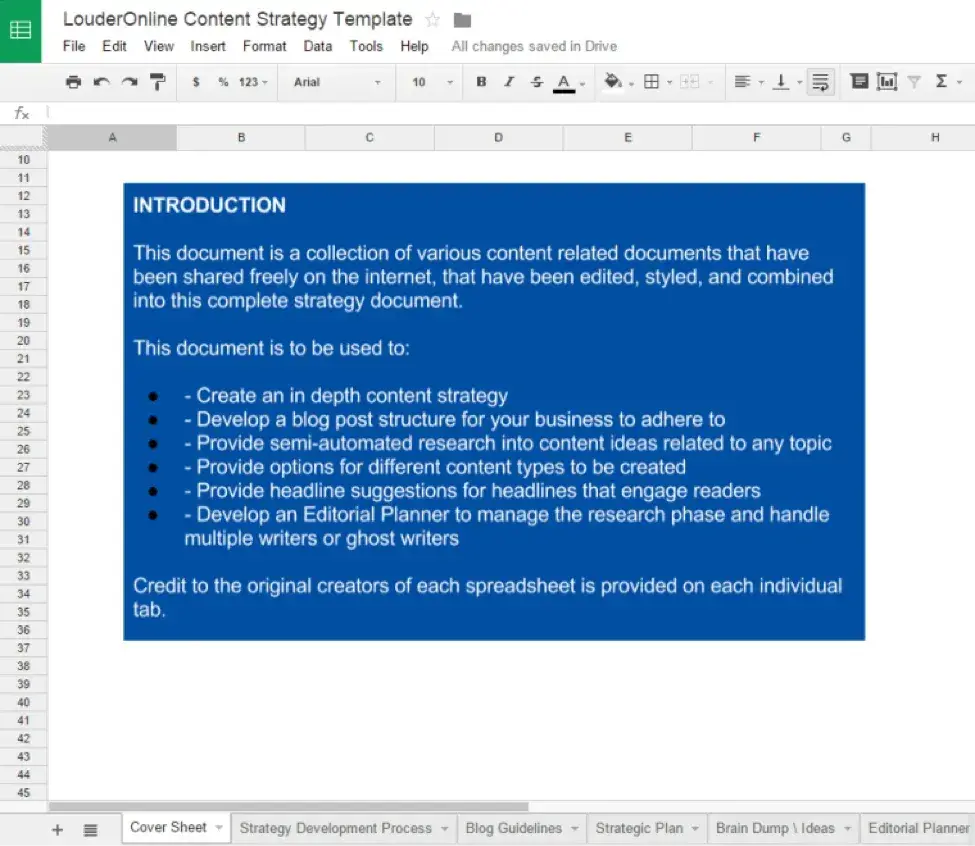
“Essentially, our content strategy template is designed to be comprehensive enough for workers to understand our expectations, without overwhelming them with unnecessary details,” Agius shared.
In addition to the content strategy pictured above, Agius also provides writers with additional resources, such as links to the client’s website, suggested topics from the client, and any special requests. This allows writers to hit the ground running and create content without requiring input at every step of the way.
Centralize information.
Siloed work is always a risk on any team, but it’s even higher stakes when you’re working remotely. Tools help with this greatly. Remote collaboration can be done via popular programs like Canva, Google Docs, etc.
Communication with clients, customers, and leads is trickier to centralize. A single marketer on your team might be engaging with leads through email, social media, Slack, etc.
A customer relationship management tool, like HubSpot CRM, centralizes all communication on one dashboard. Add your notes, meetings, and tasks to consolidate all data and ensure nothing falls through the cracks.
Something I love about HubSpot CRM is the built-in automation features. With Breeze AI, you get a summary of the relationship and can ask questions about past communication:
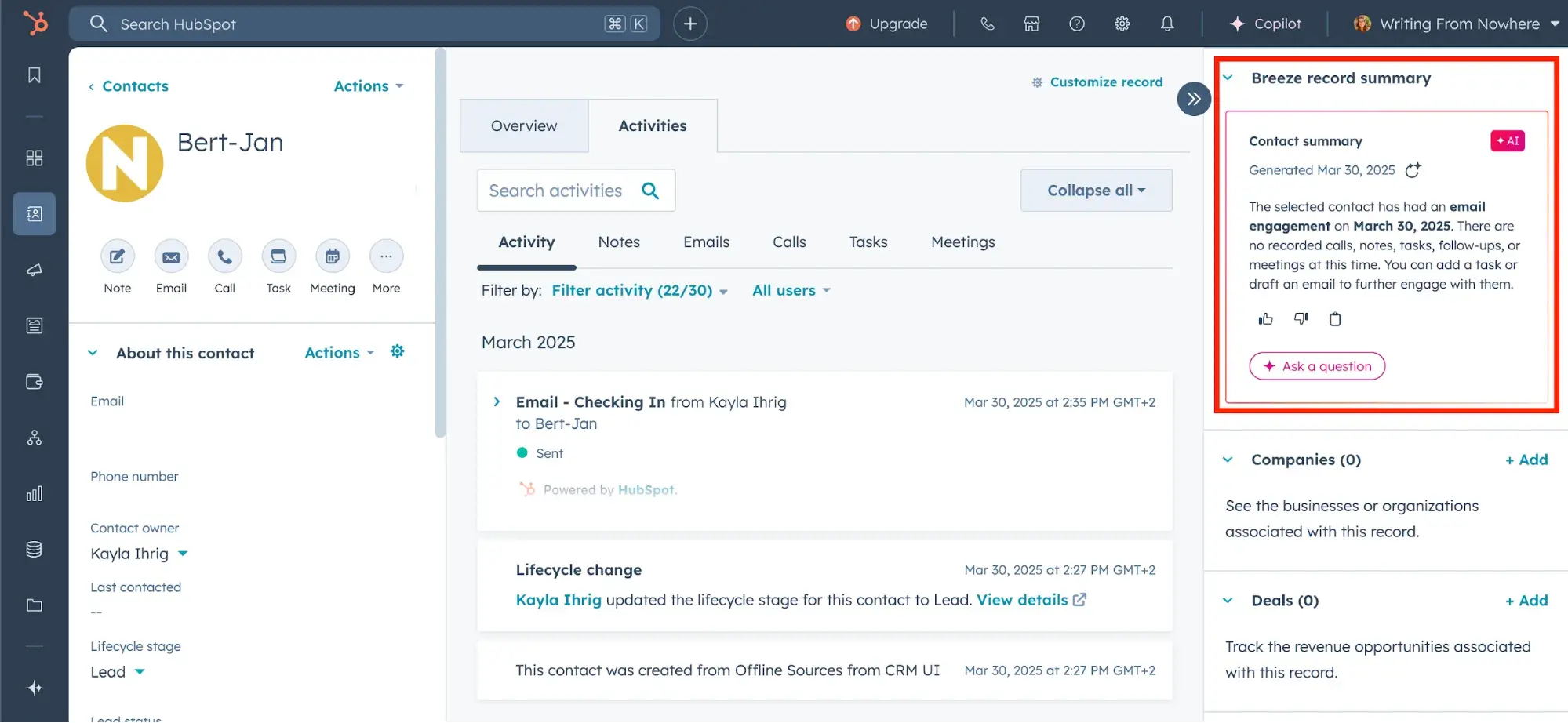
I used to be a diehard spreadsheet user (and still am for some things), but the CRM dashboard is unbeatable in terms of ease.
Never stop refining.
All of the best remote teams I’ve been a part of have been receptive to feedback from everyone at every level of the organization. After all, if you’re not growing, you’re dying.
Since technology and work culture will continuously evolve, so must managers and teams. Good team leaders aren’t afraid of this: They foster a culture of continuous improvement and two-way feedback with their teams. This culture can save a lot of time and frustration.
Here’s an example from Aaron Agius: “The current strategy template we use is the result of suggestions made to us by past clients and freelancers. The specific project structure we use in Asana comes from one of our freelancers, who brought it with her from a previous employer.”
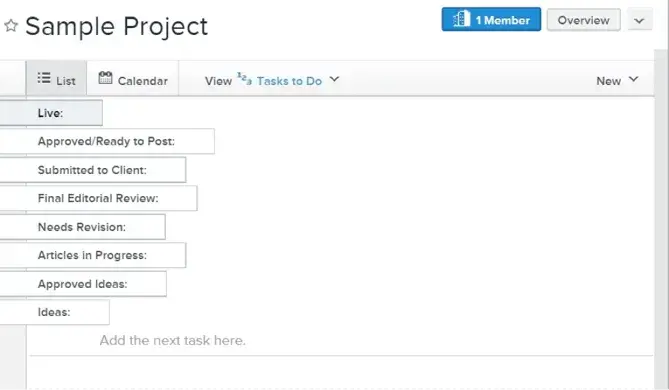
Staffing a Great Team From Anywhere
Remote hiring takes more trust than hiring in-office workers. The line between human-generated work and artificial intelligence (AI) is being blurred beyond recognition. Videos are constantly going viral that teach viewers how to cheat in interviews.
I know hiring remotely is scary. But a proactive, skills-focused, and fair hiring process will help you find the best people for your roles. Focus on building scalable systems, and you’ll be able to manage and retain your team for years to come.
Editor's note: This post was originally published in December 2014 and has been updated for comprehensiveness.


